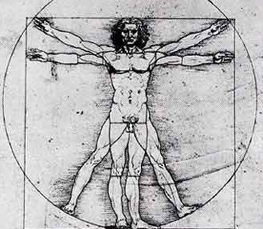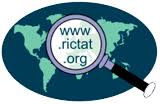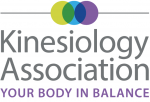What is Systematic Kinesiology?

Systematic Kinesiology (pronounced kin-easy-ology ) is a way of identifying any imbalances a person has by monitoring their ability to hold their muscles against light pressure.
Each muscle is related to an organ, and also to an energy pathway called a meridian. Together the muscle, organ and meridian form a circuit. If there are chemical, emotional, structural or energetic stresses affecting the circuit, the muscle tested will feel ‘spongy’, indicating an imbalance.
Once an imbalance is found the Kinesiologist uses the muscle test again to get feedback from the person’s body about what factors are aggravating the imbalance, and what will help to rebalance it. Here’s how it works …
Each time a relevant factor is introduced the muscle’s response changes, a bit like a switch. So imagine a spongy muscle as being ‘off’; if the person then thinks of an emotional stress and the muscle is suddenly able to hold against the pressure, i.e. it switches ‘on’, that indicates that that emotional stress in involved in that imbalance.
Similarly, if a particular nutrient, when placed in the mouth, causes the muscle to switch ‘on’, we know it will be helpful. The same process can be used to find related structural problems and energetic factors.
Based on this feedback the Kinesiologist and client can discover exactly what is involved in the imbalance and devise a treatment plan. It may include nutritional supplements, various emotional stress release techniques, Bach Flower remedies, acupressure, gentle structural realignment, chakra balancing, light touch, firm reflex massage, suggested lifestyle changes and more. The exact treatment you receive depends on the feedback your body gives through the muscle test about what it needs to return to health.
There is no guess work with Systematic Kinesiology.
History of Kinesiology
Dr George Goodheart, an American chiropractor, the acknowledged founder of kinesiology in 1964, used the model of muscle testing to evaluate what he was doing chiropractically. The model of muscle testing he used was developed in the 1930s by the husband and wife team of Kendal and Kendal (See ref 1).
Stanley Hoppenfeld MD who was assistant clinical professor of orthopaedic surgery at the Albert Einstein College of Medicine (U.S.) used muscle testing to evaluate the neurological function of the muscle (See ref 2).
In neurology textbooks muscle testing is defined as “a means of testing the motor function of limbs”. Therefore muscle testing was already accepted as a valid technique and used extensively in orthopaedic medicine by physiotherapists, chiropractors and osteopaths.
As interest grew in utilising this technique Dr Goodheart drew together a group of doctors who were also interested in developing this further and the International College of Applied Kinesiology (ICAK) was formed. As part of the foundation of expanding the application of muscle testing the team took on board work done by Bennet and Chapman with regard to the lymphatic system. They also looked at the subtle energy system as used within acupuncture.
This then was the basis of muscle testing that was to develop and become known as Applied Kinesiology (AK).
Dr John Thie, one of the original members of this research team, led by Dr Goodheart, recognised the need to educate the public in many of the self-help techniques within AK and this educational programme then became known as Touch For Health (TFH), a programme for the lay person and is taught and used throughout the world.
Today, Applied Kinesiology is regularly utilised by osteopaths, chiropractors and dentists. A pre-requisite for membership to ICAK both in the United States and in the United Kingdom is that the person can write medical prescriptions.
Systematic Kinesiology has expanded further from the concepts of TFH, but still uses and teaches techniques researched by the physicians of ICAK.
For the past 20 years Dr Sheldon Deal has given an annual seminar in London to kinesiologists on the new information and research accepted by ICAK. International Applied Kinesiology members meet twice a year and present research papers. Dr Deal was President of the college from 1978 – 1983 and after completing that term of office went on to the examining board and today holds the position of being the President of the examining board.
Dr Deal is also the technical advisor to the Association of Systematic Kinesiology.
What happens in Kinesiology treatment?
You can read all you like about Kinesiology but there is no substitute for trying it yourself. You’ll be amazed to see how it works. And, of course, you’ll begin to feel the benefits.
Your kinesiologist will first take a medical and lifestyle history. You can remain fully clothed in a Kinesiology session. The Kinesiologist will places your arms, legs or head into specific positions and then apply a light pressure. The quality of response to this pressure determines whether or not there is an imbalance in the muscle-organ-meridian circuit. A muscle test, as used by Kinesiologists, does not measure the raw physical strength. Imbalances even show up on body builders.
Muscle testing gives the Kinesiologist information and feedback from your body about its condition. Since our bodies accumulate imbalances in a certain order (see How illnesses develop), they will return to health quicker if the imbalances are treated in a certain order. Through muscle testing, a Kinesiologist can assess the order in which to treat the imbalances. Usually, once a priority imbalance has been treated, you will see that other related imbalances disappear immediately.
Based on feedback from the muscle test, you and the Kinesiologist can discover exactly what is involved in your imbalances and devise a treatment plan. It may include nutritional supplements, various emotional stress release techniques, Bach Flower remedies, acupressure, gentle structural realignment, chakra balancing, light touch, firm reflex massage, suggested lifestyle changes and more. The exact treatment you receive depends on the feedback your body gives through the muscle test about what it needs to return to health.
How many treatments?
This depends very much on your complaint, how long you’ve had it, and how fully you participate in your own treatment, i.e. making the recommended lifestyle and dietary changes that often form part of the treatment plan. Usually, however, most people experience an improvement in three to six visits. It is then recommended that you have routine balances two to three times a year
What can Systematic Kinesiology help?
Every health problem will have at least one imbalance. And every imbalance will have at least one component to it (chemical, mental, physical and energetic). Finding imbalances and treating holistically is what Systematic Kinesiology is all about, so it can help with just about anything :-
- Accident trauma
- Allergies
- Arthritis
- Asthma
- Back ache
- Breast pain and congestion
- Depression
- Digestive problems
- Dyslexia
- Fatigue
- Food sensitivities
- Irritable bowel syndrome
- Learning difficulties
- Muscular aches and pains
- Osteoporosis
- P.M.S., P.M.T.
- Phobias
- Post-operative pain
- Postural problems
- Rheumatism
- Skin disorders










